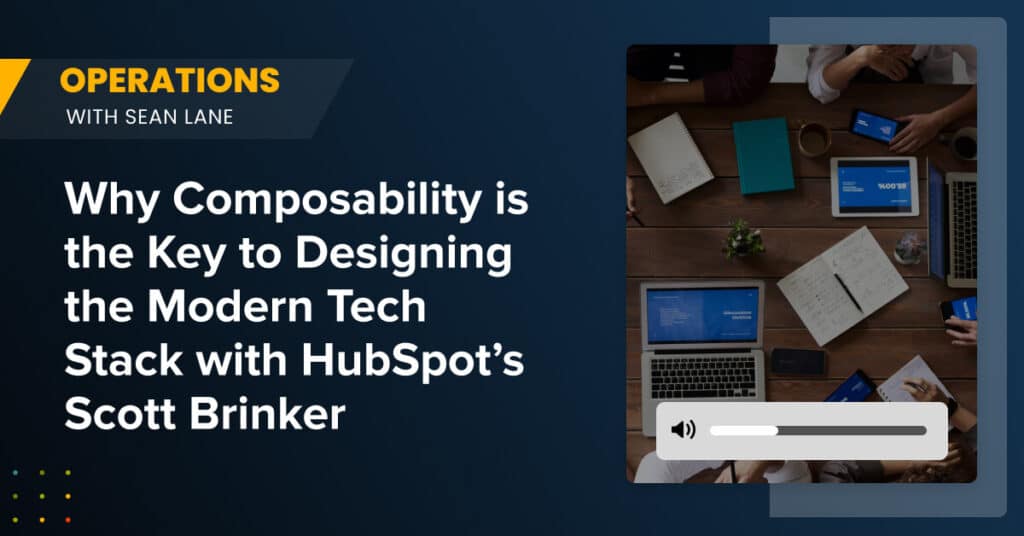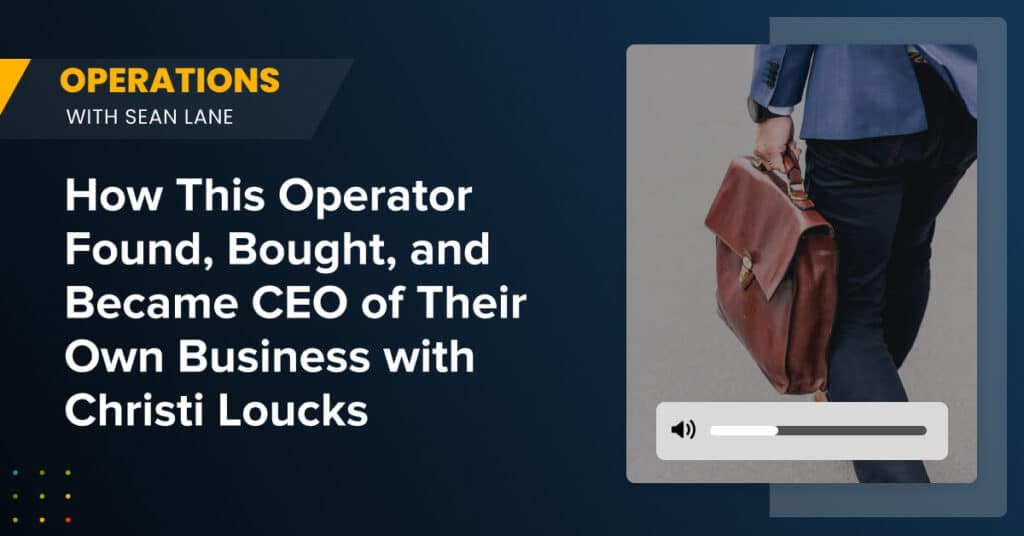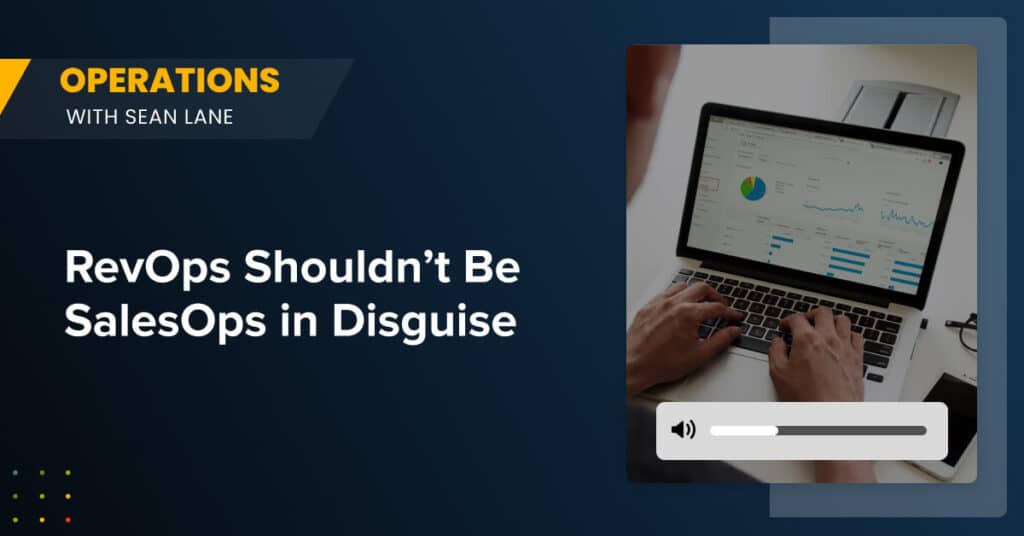Process Optimization in RevOps
Overview
- Six Sigma [2:21]
- How does process optimization help us reach our goals? [3:33]
- What is and how do you understand the “as is” process? [8:46]
- Should ARR always be the goal outcome? [11:08]
- Are swimlane diagrams the best way to document process? [14:37]
- How do we use our components and process to solve a specific problem? [19:14]
- Thoughts on rolling out new processes to the teams? [22:25]
- What is a root cause analysis and why is it important? + How to perform a condensed version [26:27]
- Final Thoughts [29:58]
Introductions
Tyler
Hey, everybody. Welcome to another episode of The Fireside Chat. I’m your host, Tyler Simons, and I am the Head of Customer Success at Fullcast, which which is a go-to-market planning and execution platform.
Today we are going to talk about process optimization. I think this is something that Charles, you’re passionate about, but also I’m secretly passionate about. I’ve struggled with starting from nothing to trying to learn about it. So this is really going to be a really interesting conversation today, not just for me, but for everybody else. So, Charles, why don’t you give everybody an introduction of who you are and what you’re doing?
Charles
Absolutely. Thanks, Tyler. Thank you for inviting me to this. Hi, everybody. My name is Charles Chen. I’m the Vice President of Sales Operations for ACV Auctions.
ACV Auctions is a five year old company. We are the United States’ largest online digital auction platform, from car dealership to car dealership. We auction way north of half a million cars a year. And we handle the transportation titles, arbitration, delivery of the car and all that stuff. The whole idea is about transparency. We do this differently than traditional options. We have vehicle condition inspectors inspect every car, full condition report, and also a 20 minute sprint option. Imagine getting online, jumping in as a buyer. You have a 20 minute sprint to bid for these cars, and that’s what we do.
My background before this was not this at all. I spent a little bit of time at Amazon, and about twelve years at Microsoft. Before that, I was with General Electric, four years with JP Morgan Chase as a retail banking officer. Before that, I was with Ford Motor Company as an engineer.
Now back to ACV Auctions. In my department, I lead three different groups, sales analytics, sales excellence and systems and tools. And it’s really a privilege to be teammates with my ACV colleagues and have the opportunity not just to serve them, but serve the automotive retail industry this way.
Six Sigma [2:21]
Tyler
Correct me if I’m wrong. Is it a Six Sigma? Is it like a black belt or whatever they call it?
Charles
Yeah. Six Sigma has a few certification levels. Green belt, black belt, and master black belt. It gets more and more advanced and much more arduous. So 2015, when I was with Microsoft, I earned my master black bill certification at Six Sigma.
Tyler
I think this will be interesting. I want to tie it into it because I think this is also like a career piece to this and why might somebody care about doing and going through this Six Sigma thing? We’ll weave that in as we have a conversation.
Where I really want to start here is convincing people why they should care about process optimization. So we set up this perfect scenario of “Okay, we’ve got this huge ARR goal,” which everyone tends to have and they’re like, “We got to grow really fast.” And the typical method might be to hire a lot of people, put a lot of bodies at this to go and sell and just try to figure it out.
How does process optimization help us reach our goals? [3:33]
Tyler
But I’m curious, from your perspective. Maybe hiring people isn’t going to cut it. How do you think process optimization can help us get there to this huge audacious ARR goal?
Charles
That is a challenge that I think any for profit company runs into. We want to hit revenue goals, but hiring and slamming bodies to it is not an option. So let’s just put this into perspective of sales. Sales motion has a natural art to it. It’s 90% activated by people. We’re not an assembly line. But there are certain things about sales. It’s no different than you cooking or you driving to a destination. It’s a series of premeditated actions trying to achieve an outcome. And that’s what sales is really at the highest level.
Of course, there’s art to it, and there’s a human touch to it, especially in that interaction with the customer. That needs to be glorified and amplified. But at the end, when we’re talking with customers, we’re trying to achieve an outcome and echo with them that benefits both ends.
So when we think about how do we achieve an annual revenue goal without adding body to it? I would recommend doing this. Take a step back and say, when we’re looking at the current sales motion, is it as efficient enough? Can it be more efficient and can it be more effective?They’re two different things. They’re two different things.
Efficient means, “Can I do more of the same sales cycle with the same amount of people? Can I increase my throughput?” Effective is when I’m about to seal the deal, a key conversion point in that sales process, do we do the right things at the right time?
An example I can bring up from many years ago when I was running a big program to improve global tele sales revenue. Imagine a telesales motion. You have 20 plus telesales centers. Calling customers, selling SaaS solutions. How many leads can each one of these telesales executives handle per day? Let’s just use the numbers 20. I cannot disclose everything I ran, but what we found out is, that is the part about efficiency.
Are we sealing that 20? But what we learned when we deep dive into that sales process very quickly, we found out a big chunk of what they do when they have the disposition, call the customer, have a chat and disposition each lead. There’s motions in there that we need to automate to give time back. And that’s exactly what we did about the efficiency piece. We actually reengineered the platform in deep, deep partnership with my former engineering buddies that ended up giving them about 15% to 20% time back per day. Because all that part, that manual part, they need to do pre-sales and post sales. It was automated as much as possible.
So one out of every six, we gave back about 15% time back per day. That’s one part. So that’s efficiency. But the other part about effectiveness was this. If we simplify a sales motion, you have leads coming in. You’ve got to convert those leads to opportunities. Separate that through and you got to make sure those opportunities became a win. And then what is the average deal size? If you multiply that from left to right by the people you have and how many days a week they work, you can predict revenue.
So leads per agents per day. That was the first piece I talked about. That was efficiency. But the next thing we talked about was effectiveness. Out of every leak, out of 100 leads that come in, how many actually become an opportunity? And when we did that, we found out if we just hold everything constant, we can fundamentally change the conversation we have with the customers and improve the effectiveness of the conversation that result in higher percentage leads becoming an opportunity.
The actual number I can quote was, prior to when we dived into that project, lead conversion rate was 7.4%. After we were done, it was 13.5%. Everything else held the same. We didn’t add people. We didn’t actually change the lead quality, but we changed the way we have that customer conversation to be much more effective. That resulted in 82% increase from the base on lead conversion rate. So these are examples of what I mean by effectiveness and efficiency without adding hit count. Hopefully that answers your question.
Tyler
I think so. I think what’s interesting here is, coming back to our original example. We’ve got this big ARR goal. People aren’t going to cut it. So we got to look at our process. And to do that, we need to focus on two things, efficiency or effectiveness.
What is and how do you understand the “as is” process? [8:46]
Tyler
So where would somebody start? Because there’s going to be processes that exist. You and I had a conversation before this, and we kind of talked a little bit about some “as is” process stuff. So I think that’s kind of where I’m headed. I want to know, where do you start to understand what the “as is” process is and if you’ve got any tips or tricks to help everybody kind of figure out how to document that or start to unpack how that works today?
Charles
Tyler, I think you probably have experienced this. I know a lot of our colleagues and friends who are listening to this Fireside Chat have experienced it in the past. How many times were we in a meeting talking about the problem? Let’s just say a sales issue that’s supposed to be addressed by sales, that’s currently being actuated by a perceived repeatable process every day.
But once you dive in, assuming that no one has a process map or even the simplest form on the screen. Once you dive in, you realize everybody’s talking about different component of the elephant. The conversation goes everywhere. We cannot bring it together. We cannot center the conversation on really going through the process together and go, “Where is the Achilles heel of the sales motion that’s causing all this leakage or all these leads falling off the clip?”, and all that stuff.
The thing I try to do is instead of jumping into these kind of conversations without prep, I as a facilitator need to do some prep before that or come in with the framework to really facilitate this. I think this is where the Six Sigma certification leading through actual project training and coaching, that part did add value here.
So typically what I would do is don’t rush, don’t jump into solutions. Start your first meeting with the critical stakeholders in the call. What is the outcome we’re trying to achieve and how do we measure that? Do we have a metric to measure that? Because if we can measure, do we really need to know if we made a difference? Spend time defining what the outcome is. Once we know that outcome, we are already talking about something pretty nebulous and centering it in.
Should ARR always be the goal outcome? [11:08]
Tyler
Sorry I just have a quick question. I feel like the default to everyone is “Our outcome is ARR.” Do you think that that’s always an easy default answer and you feel like maybe everyone needs to dig a little bit deeper into the actual outcome?
Charles
I recommend we do at the beginning of every meeting. As much as sensibly reasonable, we center everybody’s mental picture on this ARR. Our focus is “revenue about our focus.” If our company offers multiple products, is it every ARR, or is it these two product lines that’s carrying 80% of our ARR? You see where I’m going with that, right?
Just be a little bit more narrow because those two product lines, they may have their own sales motion. And the problem, the inefficiency and ineffectiveness of those sales motions could be different or could be the same. I’m not making assumptions, but narrow the scope so the conversation is pointed and we ensure the conversation is always pointing to the outcome.
So I haven’t answered your question. So back to how do we start? I would say now we agree on the outcome. A very simple way to keep things is alignment of the people on this call. These are critical stakeholders. Don’t go crazy. What I’ve seen a lot in the past is we’re not even sure what the outcome is and someone did a really intense swimlane diagram. Imagine how that conversations go. It’s gonna be a great big mess.
Agree on the outcome, the simple approach. And as a facilitator, this is what I need to do. Go, “Hey, folks, where does this sales motion start? When does this sales motion end?” Put the bookend to the process there. Then just define the middle five to seven steps. I’m very specific about five to seven. This is about alignment. This is not about detail issues yet.
For each of those five to seven steps, “Do we all agree these are the motions?” If we do agree with them, for each process step, do we have inputs and outputs for each process step that’s unique? And who are the stakeholders who will provide the input and consume the output? The reason why we’re doing this, and then we can see the interconnectivity of all the stakeholders as we actuate the process, the dependencies do the fundamentals of that before we so eagerly want to jump into a very intense swimlane diagram that I don’t advocate doing upfront at all. Start there. Start there.
Tyler
You don’t want to set a world record for the longest and largest swimlane diagram?
Charles
No. Because you heard me say earlier. Sales is human. Sales is human. Human alignment, human agreement, human commitment to this sales process. Even if you have a less optimal sales process, but if everybody is committed to it, it has a much bigger impact than the perceived “perfect sales process” that we all have a different viewpoint on and don’t want to do.
Are swimlane diagrams the best way to document process? [14:37]
Tyler
So do you find that doing a swimlane diagram tends to work the best? The reason I asked this is, we get really into the policy side of things, which are like the rules of the road. The process of going from point A to point B is getting in your car, turning the keys, putting in reverse, taking those steps towards getting to point B. But then there are rules of the road that we have to follow, like, stop sign or red light, we’ve got to stop, and those are kind of policies.
In the policy world, we’ve just spent a lot of time with our customers just documenting that in, a Word Doc or Google Docs or confluence or whatever it is and it’s very wordy. I’m thinking process probably ends up being a little bit better in those classic diagrams that you see with the squares and the circles and interconnectedness, rather than writing out a three page document on “this is what our process is.” Is that a fair assumption?
Charles
That’s very fair, because when we see words, it’s very hard to connect that mentally to the verb and the motions. It is difficult to immediately and mentally have a concrete image. “This person is doing this, and this is the outcome before we get to the next steps.” It’s very hard to do that.
I think the detailed word document is sometimes needed, but not in the absence of a consumable process map that people can reference back and forth. “Oh, this is the detail. This is what you mean.” I think they complement each other very well and use them at the right time.
One thing you did mention, we both talked about a detailed swimlane. There’s one thing I do want to clarify. When I talk about that simple approach that I mentioned earlier. Define the bookends, and then five or seven steps. For each step, what are the inputs and outputs? Who supplies the input? Who consumes the output for every step? That is very powerful for alignment across stakeholders. But there’s one part of that process that’s missing, that a swimlane will add value to, but the swimlane should be done in subsequent of that here it is.
Because when you define five to seven steps, you really don’t see the details, the rework, the grittiness in the sales process. We’re supposed to bill an invoice customer. They don’t invoice. What is the next step? Who owns the next step of follow up? That doesn’t show up in the five to seven steps. Simple alignment decision.
So a swimlane diagram adds value, but it adds tremendous value when you’re really deep diving to find the gritty, sandy spots in the process that you want the line of stakeholders to go fix.
The approach I mentioned before, the bookends, five to seven steps in between. That is for internal alignment. Deep, deep problem solving comes from the swimming diagram. Hopefully that makes sense.
Tyler
It does. I think it does. I don’t know anything about process. I just make stuff up.
Charles
Funny that you say that, but, you know you actuate processes every day. The way you brush your teeth, there’s a sequence to that. You drive to restaurants, order food, by the time you pay, that entire cycle is a process. We just do it so automatically. It no longer needs to be intentional.
But sales motions are very intentional. I’m not advocating that we need to stipulate every step in the process. This is not an assembly line. Sales is not. Sales is 99% human based. But there’s critical points in the process that we can be more effective in. There’s mundane parts of the process we should automate for them so they can focus more times for sale.
Tyler
All right. We got our five to seven steps, and everyone’s kind of aligned. There’s a problem that exists. I think it’s a nebulous problem in our examples here. We haven’t really identified what it is, but we’ve done the outcome. We’ve got the five to seven steps. There’s a problem.
How do we use our components and process to solve a specific problem? [19:14]
Tyler
I think what would be helpful for us is just to figure out, since the five to seven steps are the components that lead up to an outcome. How do we use this to then really dive into a specific problem or to solve it or to go after that efficiency gain or effectiveness gain?
Charles
Totally makes sense. I think this requires teamwork and common sense. A very simple approach I would recommend is this. If you have the simple five to seven process steps mapped out on the white sheet or whiteboard in the conference room, you have your stakeholders in there.
Let’s just imagine you are that salesperson walking from left to right. Imagine going through that together. Walk that through as a team and say, “Where can this fail in there?” Just mark it all up. That’s step one, mark down all the parts that can impact revenue lending for this process. Just write it down. But Tyler, you and I both know, oh my goodness, we can write down 20, right? But out of these 20, which one makes the biggest impact?
In the absence of really detailed data to validate that, we don’t need that. The key thing is we need consensus on what to work on. Very simple. Take those 20 or just do a quick voting amongst the teams. Or what you can do is just simplify. There’s ten, we’ve called out ten issues. Put those ten on the Excel sheet and use a very simple prioritization matrix. We can say perceive business impact high, medium, low. Potential implementation costs if we’re going to fix it high, medium, low. Assign high, 8, 9 and 10, medium, 3 or 4, low, 1.
And you notice there’s a big gap I intentionally did between high and medium because I really want to break out the high ones. The longest way can be CP, customer and partner impact, high, medium, low and multiply that through. Here’s the thing, if you multiply that through, all the numbers are the same. We haven’t done a really good job. Really hardcore, brutally prioritizing this. Usually it should be 20% or 30% of these ten have the biggest impact and are the easiest to implement. Focus on those. Focus on those. This is a simple true and tried way.
Build a matrix. You can Google, you can Microsoft Bing it. It’s like a prioritization matrix. You’ll come up with different ways to help you prioritize and you put in the factors that is most appropriate for your company and then multiply. Then once you score them, multiply them through. The highest score wins.
Thoughts on rolling out new processes to the teams? [22:25]
Tyler
You work on that, you fix it. Whatever it is that needs to get done, you’re about to roll out a new process. I’m wondering if you’ve got any thoughts on rolling out new processes to the teams. Obviously there’s impacts to sales people or different roles.
Charles
I will be the first to say I have not done this perfectly in the past.
Tyler
I’m awful at it.
Charles
I’m going to loop back to what we talked about earlier. Like a concept I mentioned earlier. What is the impact of a solution we’re going to deploy to the sales process? What is that impact? Impact equals two things. What is the quality of that solution? Does it truly address the root cause in a very effective way? That’s quality. But the second part is the acceptance of the sales people and the stakeholders that need to actuate it.
You miss the second part. You can have a perfect solution right here, it doesn’t matter. It’s a balance between the two. When we’re moving at hyper speed, we do not need the perfect solution. But we need a good, solid, thought through solution with high acceptance. And I will always air more on the right hand side. I will balance you, but always air on the people side.
When we think about changes, like even talking to my own wife. Trying to get her to allow me to buy something I’m not allowed to buy. Where is my wife on that change management cycle? Is she hostily against? Which has happened often. Is she aware? Does she understand why I want that? Is she supportive and committed?
For a process, especially a sales process that’s going to definitely impact revenue, sales folks that have to actuate on that and the internal stakeholders need to be at the minimum supported level. Better yet, committed. We need to know where they are right now. Are they not even aware? Do they understand? Spend the time on that change management. Start with the top, start with the leaders and put customers and their needs in the center. When you start the conversation about this potential change to drive a natural echo, it needs to start with what is in it for them? My team sets quotas. My team pays commissions. I always approach my sales peers with how can this impact the customer and just as importantly, impact your pay? Start right there, and then the other things will gradually fall in line.
Tyler
It sounds like it’s a conversation to probably start earlier rather than later. You don’t want to go all the way down to the “I’ve solutioned. This I’ve built it out and we’re about to roll it out. So one week before we push it into production or roll out quotas or anything, I’m going to start.” No, you should probably start very early on and kind of build that consensus or acceptance.
Charles
You’re absolutely right. Very great comment. In fact, earlier we talked about the stakeholders and the sales to help you optimize the sales motion. Don’t do it yourself. There’s no way you or me can know better than they do.
Put the outcome in front of everybody. Agree to that outcome. “This is what we want. This is the impact we want.” Work with the area of sales vice President. Have them volunteer a few of their top lieutenants and build the process with them. Build the process with them and prioritize people. Prioritize people.
What is a root cause analysis and why is it important? + How to perform a condensed version [26:27]
Tyler
Okay. We’re getting close on time. But there’s one more thing that I want to talk about, and it’s just a root cause analysis. “We have problems that come up. I never do them because I’m too busy. I’m too busy to do this formal review.”
Charles
So I think what would be interesting is one talk about what a root cause analysis is and why anybody should really actually care about it. Then the second thing is, let’s take the lens of one person or two people in revenue Ops or sales Ops. You want to throw it off to the side because you don’t have the time, but we know that we should be doing it. So is there like a lightweight version of this?
No, great question. I think it doesn’t need to be a full blown intensive data analysis with run charts or a super detailed process analysis. Many times. We don’t have the time for that. But one thing I’m a big believer in is that we need to spend more time on solutioning than the effort that was spent to create the problem in the first place. We have to. Otherwise the problem doesn’t go away. There is a very simple way that I’ve done it in the past. You ever heard the Five Why analysis? The Five Why’s?
Tyler
I probably have, but I don’t remember.
Charles
It’s not the super aggravating one that our little kids like my little kids when they were one when I said “I need this,” and they go “Why?” It’s getting layer, after layer, after layer to get to the calls. One simple one I use when I was teaching Six Sigma Greenville classes in the past is that the Washington Monument has a lot of pigeon residues on it. As a result it is eating it up. Eating up the white marble.
So they said, why is that happening? We just got to change it. Why is it eroding. It’s because the chemicals required to clean up the residue are so strong they’re eating the white marble. Oh, we just got to change the chemicals. No pause right there.
Why are pigeons congregating there to relieve themselves on the monument? When are they doing that? They do it in the evening. Why are they doing it in the evening? It’s because I think they’re there to catch some bugs. Why are there a lot of bugs? Oh, they’re there because a lot of the spiders become much more active at that time. Why are spiders very active at that time? Because the light comes out at this time and the nets show up.
This is just an example. It’s a bit fictional. But what they did was, change the timing when you turn on the evening light. The Washington Monument actually decrease the amount of pigeon residue drastically. So instead of spending all the money replacing all the chemicals, they just change the lighting time. That’s an example of Five Why analysis. Just keep digging. Peel that onion until a point you’re going, “I believe this is the root issue. Let’s try it.” So that’s a lightweight example. You don’t need to be a Six Sigma whatever belt to do that.
Final Thoughts [29:58]
Tyler
We are definitely out of time. Thank you. I’d like to think that I’m now a white belt. I think that’s the very beginning which doesn’t exist in Sixth Sigma, but got a lot of work to do there. Charles, I really appreciate you taking the time today. This has been a really interesting conversation. Is there anything else you want to add to summarize before we kind of call it a day?
Charles
First of all, thank you. Thank you and your team. All I can say is to my peers in sales operations and revenue operations, always put customer and your sales folks at the center of your decisions. Reengineer a motion with their needs in mind and then build a process in partnership with them. Know the metric we’re trying to achieve and make a big impact together. We may not always have the luxury to do that because of time crunch. But do it as much as you sensibly can and it will make a difference especially for the customers.
Tyler
Awesome. Thank you, Charles.
Charles
Thank you sir.
Tyler
Have a wonderful rest of your Wednesday. So we’re almost there. And until next time, everybody. See you.
Charles
Thanks everybody. Thank you.










